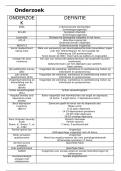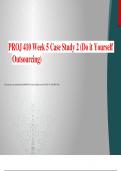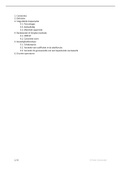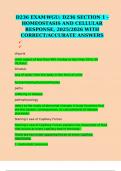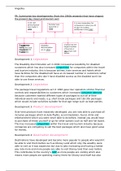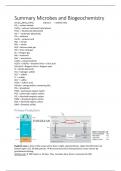1. What do lymphocytes do?
Identify and kill pathogens
2. What do lymphocytes recognise?
Antigens
3. What can the different surface molecules enable lymphocytes to identify?
Toxins, pathogens, cells from other organisms of the same species, abnormal body
cells
4. How are lymphocytes prevented from attacking self cells?
The lymphocytes that are complementary to self-cells die
5. What are the remaining lymphocytes complementary to?
Non-self cells
6. What are antigens?
Proteins on the cell surface membrane that trigger an immune response
7. What is antigen variability?
When the pathogen’s DNA mutates and the shape of the antigen changes
1. What is the first line of defence?
Physical barriers like skin
2. What is the second line of defence?
White blood cells
3. What type of responses does the second line of defence have?
Phagocytosis: non-specific
Lymphocytes: specific
4. What is a phagocyte?
Macrophage that carries out phagocytosis
5. Describe the process of phagocytosis
The phagocyte is attracted to the chemical products released by the pathogen, so it
moves towards it along a concentration gradient. The receptors on the phagocyte
bind to the antigen of the pathogen. The phagosome engulfs the pathogen and the
lysosomes move and fuse with the pathogen to form a phagolysosome. The
lysosome contains lysozyme enzymes, which hydrolyse the pathogen and kill it. The
hydrolysis products are absorbed by the cytoplasm.
1. Where do T cells mature?
Thymus
2. What type of response involves T cells?
Cell-mediated response
3. What is an antigen-presenting cell?
A cell that has antigens of a non-self cell
4. Why is the response called cell-mediated?
T cells will only respond to the antigens that are on the antigen-presenting cells
rather than antigens in the blood
5. Describe the process of the cell-mediated response
The phagocyte engulfs and destroys the pathogen. The antigens from the pathogen
present themselves on the surface of the cell to form an antigen-presenting cell. The
T-helper cells have receptors which bind to the antigens on the APC. This stimulates
Identify and kill pathogens
2. What do lymphocytes recognise?
Antigens
3. What can the different surface molecules enable lymphocytes to identify?
Toxins, pathogens, cells from other organisms of the same species, abnormal body
cells
4. How are lymphocytes prevented from attacking self cells?
The lymphocytes that are complementary to self-cells die
5. What are the remaining lymphocytes complementary to?
Non-self cells
6. What are antigens?
Proteins on the cell surface membrane that trigger an immune response
7. What is antigen variability?
When the pathogen’s DNA mutates and the shape of the antigen changes
1. What is the first line of defence?
Physical barriers like skin
2. What is the second line of defence?
White blood cells
3. What type of responses does the second line of defence have?
Phagocytosis: non-specific
Lymphocytes: specific
4. What is a phagocyte?
Macrophage that carries out phagocytosis
5. Describe the process of phagocytosis
The phagocyte is attracted to the chemical products released by the pathogen, so it
moves towards it along a concentration gradient. The receptors on the phagocyte
bind to the antigen of the pathogen. The phagosome engulfs the pathogen and the
lysosomes move and fuse with the pathogen to form a phagolysosome. The
lysosome contains lysozyme enzymes, which hydrolyse the pathogen and kill it. The
hydrolysis products are absorbed by the cytoplasm.
1. Where do T cells mature?
Thymus
2. What type of response involves T cells?
Cell-mediated response
3. What is an antigen-presenting cell?
A cell that has antigens of a non-self cell
4. Why is the response called cell-mediated?
T cells will only respond to the antigens that are on the antigen-presenting cells
rather than antigens in the blood
5. Describe the process of the cell-mediated response
The phagocyte engulfs and destroys the pathogen. The antigens from the pathogen
present themselves on the surface of the cell to form an antigen-presenting cell. The
T-helper cells have receptors which bind to the antigens on the APC. This stimulates


